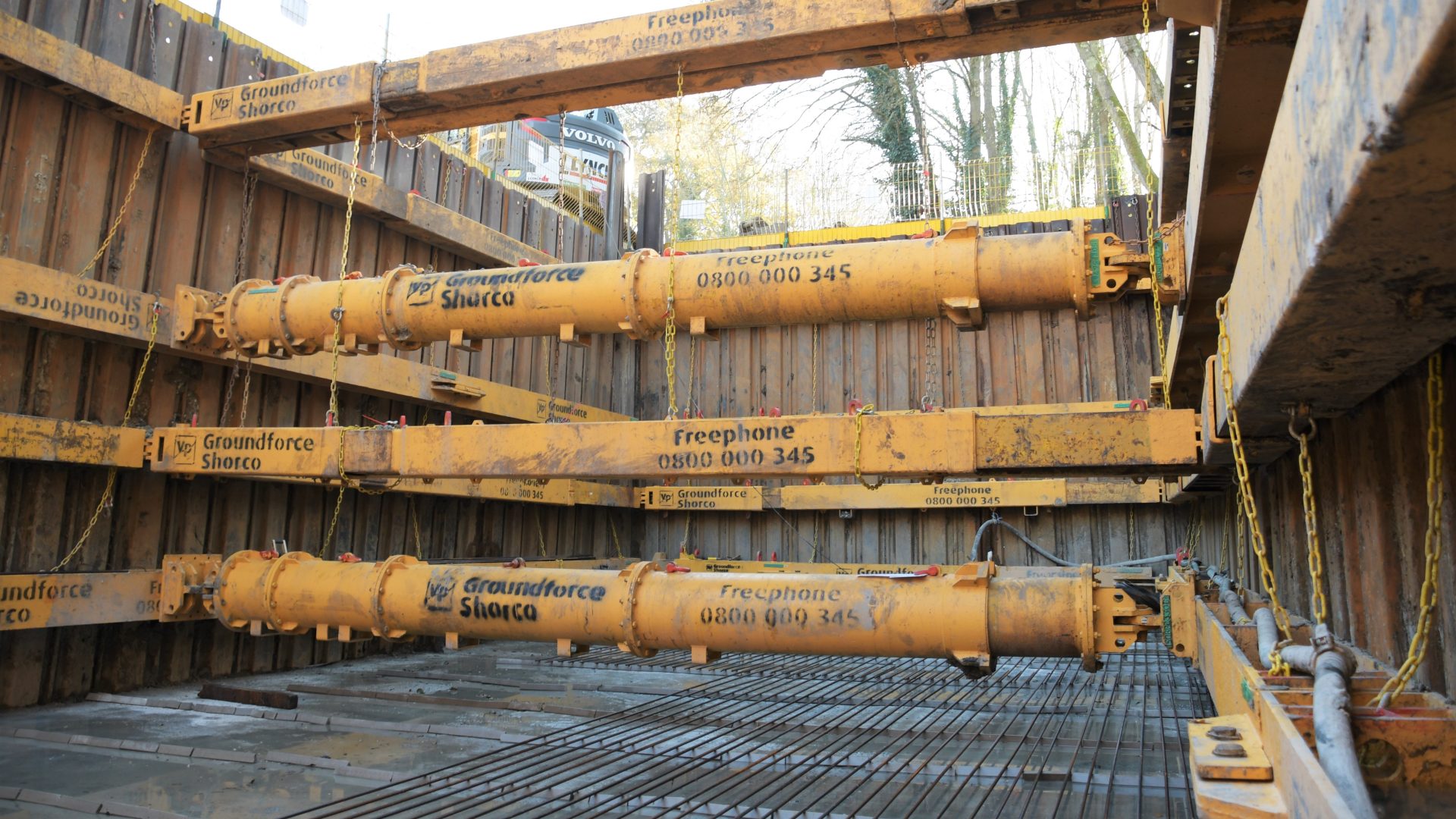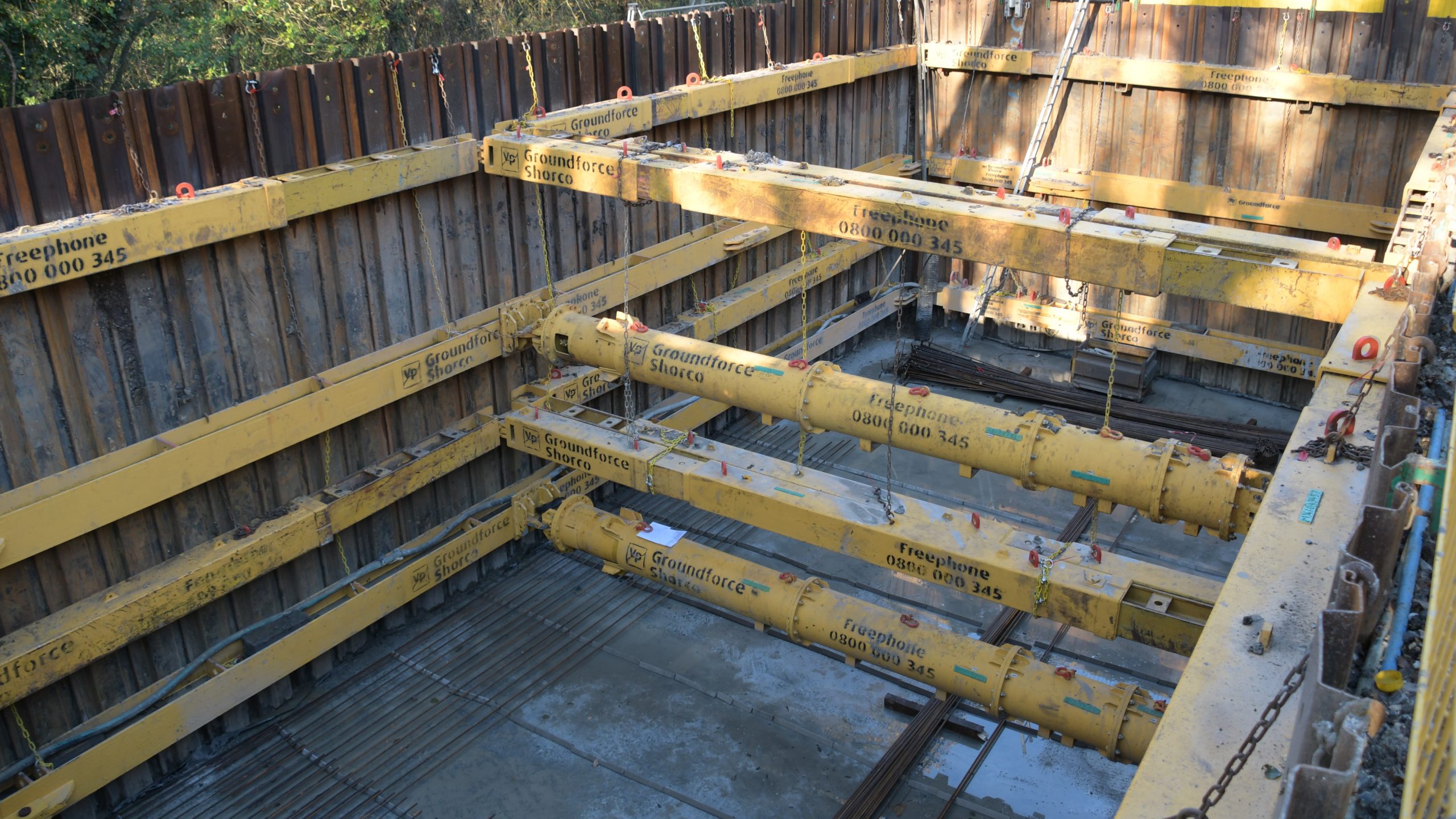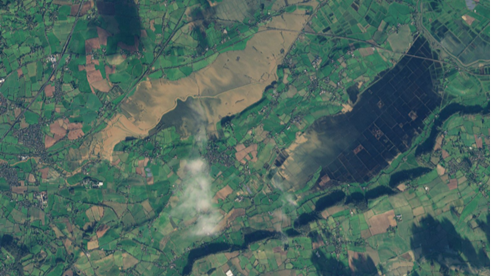Groundforce Shorco is providing essential structural support for a water treatment project deep in the New Forest.
Main contractor GTb is upgrading a wastewater treatment works outside the village of Boldre, near Lymington, as part of its AMP7 framework contract with Southern Water.
The project involves installing new equipment to prevent phosphates escaping into watercourses. Phosphate pollution from domestic wastewater has become a severe problem in the region, creating algal blooms that choke watercourses.
A vital part of the new upgrade is the installation of two large humus tanks – underground settlement tanks that separate solids from the effluent. To accommodate these tanks, GTb’s groundworks subcontractor, TC Jones, is digging a large excavation and using Groundforce Shorco equipment to support the sides.
The excavation measures approximately 19.4m in length, 8.4m in width and is 6m deep. The ground conditions are poor, comprising a mixture of made ground, sand, gravel, silt and clay.
TC Jones has lined the excavation with Groundforce Shorco GFI interlocking steel sheet piles with corner piles. The 7m-long steel sheets were installed using the slit-trench method as buried obstructions meant the usual dig-and-push or pre-drive methods could not be used.
Therefore, a narrow trench was excavated around the perimeter, backfilled with loose material, and the sheet piles driven through the backfill material to formation level plus 0.9m toe-in.
Groundforce Shorco has supplied its Maxi Brace and Mega Brace frames to support the sheet-piles walls of the excavation. Four frames, numbered from 1 (at the top) to 4 (at the bottom) have been installed.
Frames 1 and 3 use the Maxi Brace system and both comprise two bays installed back-to-back. This provides support across the width of the excavation at its mid-point. Frames 1 and 3 are designed for a working load capacity of 50.6kN/m.
Frames 2 and 4 use the larger-capacity Mega Brace system and are designed for working loads of up to 75.2kN/m. These two frames are not separated into two bays. Instead, mid-point lateral support is provided by Groundforce Shorco MP150 hydraulic struts.
Once the sheet piles were installed the installation sequence was as follows:
Dig down 1.2m and install frame 1 at 1m below ground level (BGL). Then dig down to 3m BGL and install frame 2 at 2.7m BGL – continuing in this manner to install frame 3 at 3.8m BGL and frame 4 at 5m BGL.
Finally, TC Jones excavated to formation level (6m) ready for the 300mm-thick reinforced concrete base slab to be installed. Once the slab has cured to a strength of 10N/mm2, frames 3 and 4 can be removed ready for the tanks to be installed.
“The tanks themselves are made of GRP and come in sections,” explains GTb’s project manager Lee McGrattan. “They’re assembled at ground level before being lifted into the excavation and then we install shuttering around them and encase them in concrete.”
After the tanks are installed, GTb will build a series of chambers between the two humus tanks using traditional methods. These collect discharges from the tanks and route them to another part of the plant.
Using Groundforce’s modular hydraulic shoring system has helped optimise the construction programme. The components are quick and easy to install and equally easy to remove after use.
However, the site’s remote rural location has posed a few technical challenges, says Groundforce Shorco area sales manager Jason Moore.
“The site is tucked away up a narrow lane which made vehicle access difficult. We had to deliver all the equipment on smaller rigid lorries because there’s no way an articulated truck could access the site,” he explains.
For GTb there are other obstacles to contend with.
“There are essential overhead power and telecoms services crossing the site which reduced our headroom,” says Lee McGrattan. “The site team liaised with the DNO [Distribution Network Operator] and arranged for the cables to be sheathed. This meant we were able to reduce the exclusion zone.”
Another problem was the variable nature of the ground, which is very soft in places. To overcome this, the contractor placed bog-mats over the trafficked areas to spread the vehicle loads.
The soft ground conditions also meant that Groundforce Shorco had to design its bracing system to allow a uniform surcharge of 10kN/m² at ground level around the excavation, to allow for general site traffic and excavators up to 30 tonnes.
By mid-January 2023, TC Jones had completed the excavation and GTb had cast the base slab.
“Once the concrete slab has reached a strength of 10N/m2 we can remove frames 3 and 4 and start installing the humus tanks,” says Lee. “Then it’s a matter of backfilling the excavation and removing the Groundforce Shorco equipment in sequence. What could have been a difficult job has actually gone very smoothly.”




